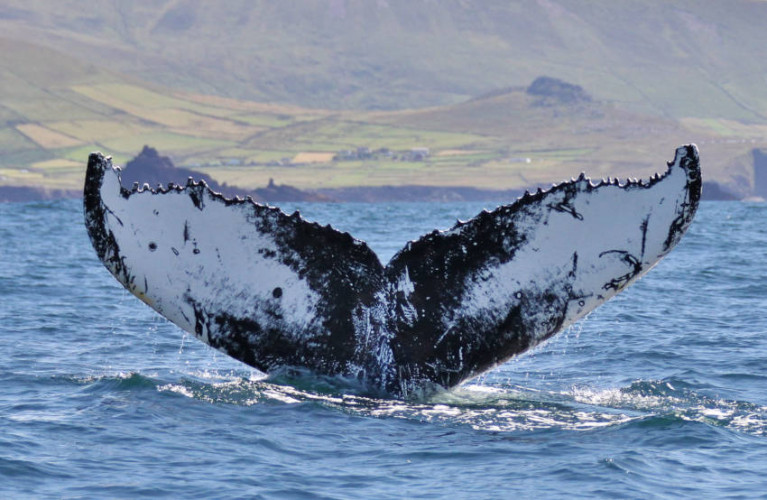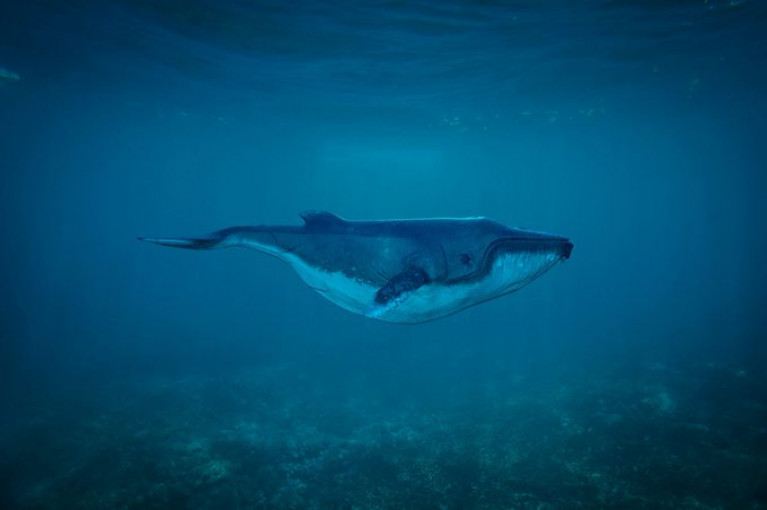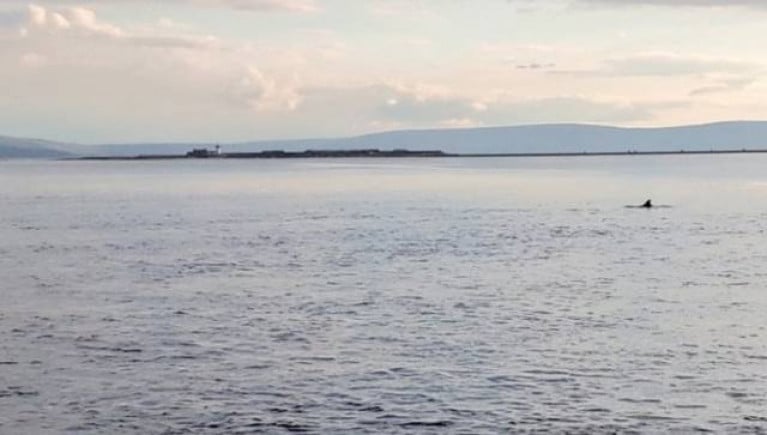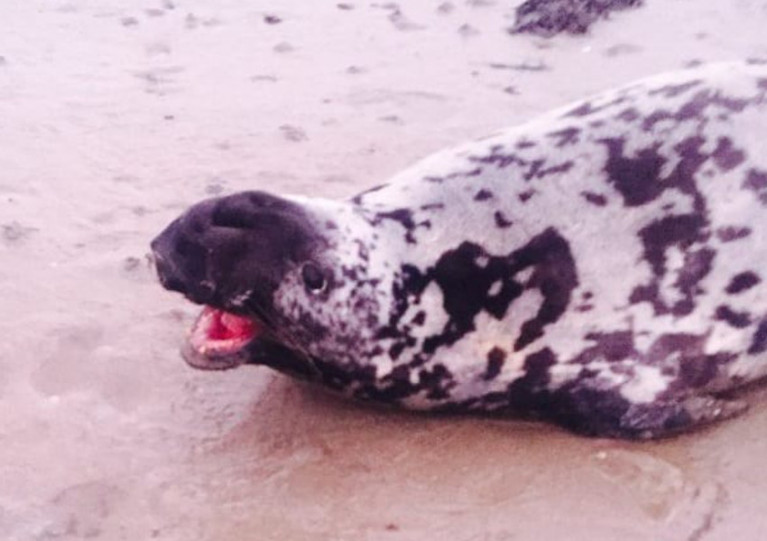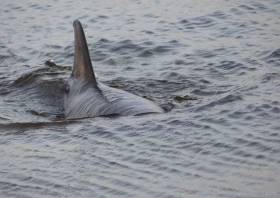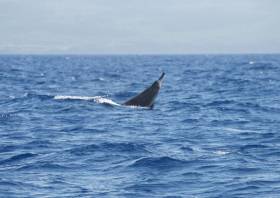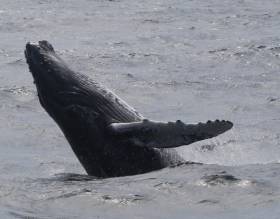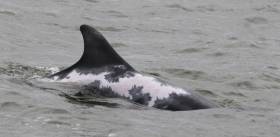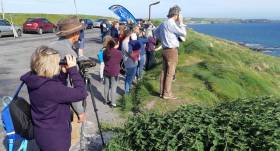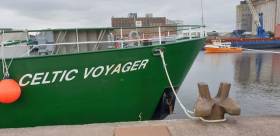Displaying items by tag: IWDG
The Irish Whale and Dolphin Group (IWDG) is seeking a new sponsor for its “pioneering” WhaleTrack Ireland project.
Previously backed by Ryanair, WhaleTrack Ireland seeks to understand how the large marine wildlife — especially humpback whales — are using Irish waters, largely through citizen science.
During the last 12 months, the IWDG says it has increased its work raising awareness of humpback whales “to unprecedented levels in Ireland”.
This includes the first ever confirmation of breeding grounds in Cape Verde for whales that frequent Irish shores.
“In order to continue this important work the IWDG need a new sponsor,” the group says.
“We have significant capital equipment purchased under the Ryanair sponsorship but require funds to support fieldwork and maintain our photo ID catalogues and provide support to our citizen scientists.
“This work supports the development of marine tourism in Ireland and greatly enhances the opportunities to go and see these magnificent creatures as well as ensuring their long-term conservation.
“The IWDG estimates that this costs around €40,000 per annum to maintain our current level of activity.”
Prospective sponsors, or those who could connect the group with same, are encouraged to get in touch with the IWDG at [email protected].
Around Our Coast ‘Everything is Changing’ – Whale Life
The skeleton of a Wexford blue whale (82ft long) named Hope has supplanted ‘Dippy’, the much loved Diplodocus, as the main attraction at Hintz Hall in the National History Museum in London, reports The Green News.ie
“Look at the whale!” exclaim the children pointing upward, their small bodies further miniaturised as they pass beneath Hope’s colossal ribcage, comprised of 32 ribs and once housing a 500-pound beating heart.
One gets the impression their wonder and excitement is well matched by the sheer scale of Hope herself, her majesty, as well as the efforts taken by the museum staff to put her together – installing the largest living creature on Earth, bone by bone, in an act as deliberate as it was precise.
By replacing Dippy, a replica dinosaur, for something real, Hope’s keepers have inspired wonder for all wild creatures that exist today in an increasingly hostile world, with our whales all too often caught in the crosshairs.
Everything is changing
At the Irish Whale and Dolphin Group’s annual meeting held in Dublin last December, the phrase “everything is changing” summed up Ireland’s whale activity. While Sightings Officer Pádraig Whooley reported the huge potential for whale science in Ireland, the “flurry of sightings” in 2019 gives cause for concern. Times are changing, he said.
For much more click this link.
Nimmo The Bottlenose Dolphin Heralds Spring In Galway City
The traditional first day of spring in Ireland also saw the return of Nimmo, a bottlenose dolphin who’s become a regular visitor to Galway city.
The Irish Whale and Dolphin Group (IWDG) says this is the sixth consecutive year for this particular dolphin, who has stayed for anywhere between four and eight months since 2016.
As reported this time last year on Afloat.ie, Nimmo’s predilection for Galway Harbour is a sign that the area has become an important feeding habitat.
“This is a wonderful opportunity for people in Galway to observe a wild dolphin close to a city centre and often within clear view of the shoreline,” says IWDG sightings officer Pádraig Whooley.
He also calls on local citizen scientists and marine wildlife watchers to submit their own sightings over the coming months.
Unusual Seal Surprises In West Cork Among New Year Coastal Sightings
A seal rarely sighted in Irish waters was among the first sightings of the New Year by eagle-eyed supporters of the Irish Whale and Dolphin Group (IWDG).
The hooded seal was spotted by Helen Tilson of Schull Sea Safari on the mudflats at Toormore Bay in West Cork on New Year’s Day, and represents only the fourth or fifth Irish record for the Arctic marine wildlife species.
Video recorded by Tilson of the animal “removed any doubt” it was a a hooded seal “as it shows the nasal sac starting to balloon as she approached it, and it made a growling roar, the likes of which I’ve never heard from one of our grey seal bulls”, according to IWDG sightings officer Pádraig Whooley.
It’s believed this particular seal is a sub-adult male “in rather thin condition”, which is to be expected as it is so far south of its usual range.
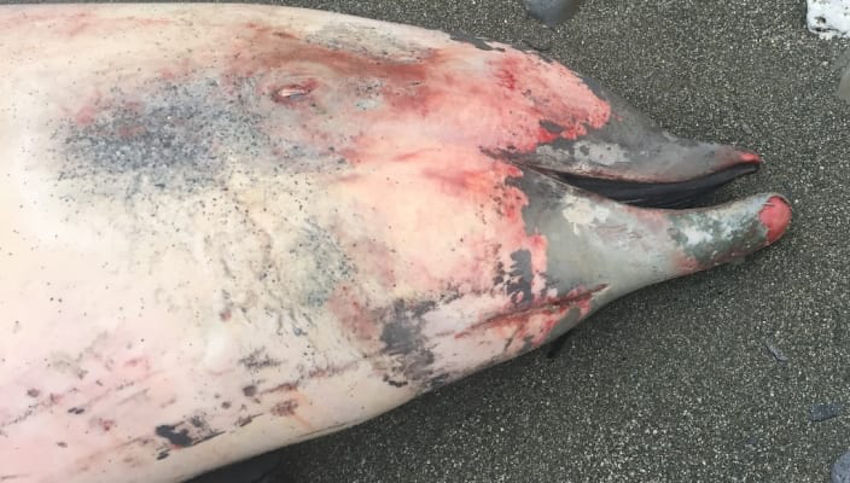 Cuvier’s beaked whale carcass in Clonakilty Bay on 21 December | Photo: Grace Keane O’Connor
Cuvier’s beaked whale carcass in Clonakilty Bay on 21 December | Photo: Grace Keane O’Connor
Meanwhile, reports of four stranded Cuvier’s beaked whale carcasses within 12 days and 70km of each other in December have prompted fears of a new mass stranding event for the deep water species.
The IWDG’s Mick O’Connell said all four were recorded along the Cork coast, beginning in Tragumna (16 December) and followed by Castlepoint in Roaringwater Bay (17 Dec), Lislevane in Clonakilty (21 Dec) and offshore at Galley Head (27 Dec).
“For the third time in five years we are looking at an unusual mass stranding of Cuvier’s beaked whales on the Irish coast, likely caused by a single event at sea,” he said.
But the situation as yet defies explanation. “Without specialised post-mortem of very freshly dead animals … we can’t even establish cause of death,” O’Donnell added.
A bottlenose dolphin was recently rescued by quick-thinking locals after live stranding on Mutton Island near Galway city.
The Irish Whale and Dolphin Group (IWDG) reports the story related to it by friend of the group Jason, who was alerted to the marine mammal in the shallow water near the Galway Bay lighthouse by an Australian couple with whom he had previously been discussing the area’s resident bottlenose Nimmo.
“I just knew it was in trouble so I ran down and the dolphin was out of the water alive,” he said.
With the tide going out, time was of the essence as Jason was joined by three others who offered their scarves to form a brace to lift the dolphin into deeper water.
“I just went the rest of the way as it was getting dark at that point. With one final push it just started to swim away.
“I can’t explain how I felt and we did it as a team. An incredible thank you so so much to those who helped,” he added.
The incident came just days after the IWDG called on the Government to join forces with NGOs like itself to develop a stranding response protocol, especially for large whales.
The IWDG said “fresh attention” has been drawn to the issue following the death of a fin whale seen swimming in Dublin Port earlier this month.
More recently, an endangered sei whale was found floating in the River Thames at Gravesend in the UK last Friday (18 October), nearly two weeks after a humpback whale died in the same stretch of water.
IWDG chief executive Dr Simon Berrow said: “Strandings, both live and dead, of large whales are not common in Ireland but do occur and we need a protocol, signed off by relevant partners, including Government agencies, so we can respond quickly and efficiently in such cases without having to phone around looking for resources and support.”
Concerns For Rare Beaked Whale Refloated From Waterford Beach
Concerns remain for the health of a rare beaked whale refloated from a Co Waterford beach at the weekend, as The Irish Times reports.
The Sowerby’s beaked whale stranded near Helvick Head on Friday (30 August) and was twice returned to the open sea by the local RNLI lifeboat crew.
The incident marks the fourth stranding this year around the coast — and the only live stranding — of a deep water marine wildlife species that’s historically been rare in Irish inshore waters, with only 25 confirmed since records began.
Its fate is currently unknown, but Irish Whale and Dolphin Group (IWDG) strandings officer Mick O’Connell suggests the situation doesn’t look good.
“Sowerbys usually live in much deeper water 300kms off the west coast — that makes me think it’s unlikely it will survive — it may be sick, but it’s got as good a chance to survive as it could because everything was done locally to get it back out to sea,” he said.
The Irish Times has more on the story HERE.
IWDG Sets Sail For Cape Verde This Weekend On Latest Humpback Whale Research Mission
The Irish Whale and Dolphin Group (IWDG) sets sail this weekend for Cape Verde next month on its eighth humpback whale expedition.
Funded by the Island Foundation, this two-week mission comes just months after the IWDG finally confirmed the breeding grounds for Ireland’s regular humpback whale visitors near the west African island chain.
Cape Verde also appears to be a chosen spot for these marine wildlife giants from both ends of the earth, as a previous mission in September 2014 recorded humpbacks that usually feed in the southern hemisphere.
Next month’s mission, while building on this research, will also involve training local marine biologists in cetacean survey and research techniques “to empower them to take ownership of whale and dolphin conservation”.
Spanish research group Edmaktub will be providing its 47ft Lipari catamaran as a research platform for their work, updates from which will be posted to a dedicated Facebook page.
More Sightings Off Kerry Of Miracle Dolphin ‘Spirtle’
Marine wildlife miracle Spirtle appears to have taken up residence off the Kerry coast if the many sightings over recent weeks are anything to go by.
Last month the young dolphin was spotted in the area some weeks after she was seen off the East Coast, headed south from her usual haunt off the west of Scotland.
Indeed, it was there where she live stranded in 2016 and suffered severe sunburn, which left her with her distinctive markings.
Despite fears that she wouldn’t survive her ordeal, Spirtle returned to fine health and is now part of a small pod regularly feeding off Feit in Tralee Bay, and which includes a juvenile, according to the Irish Whale and Dolphin Group (IWDG).
Researchers are now trying to establish if Spirtle became part of this group after her long travels, or whether they swam with her from Scotland.
Initial evidence suggests at least two of her pod are Scottish regulars, including Spirtle’s own mother Porridge.
“We have documented movements of individual bottlenose dolphins between Ireland and Scotland before, but we do not know how often this occurs or whether it is typical behaviour,” the IWDG said.
“We hope to continue to monitor the presence of this famous ‘Scottish’ dolphin and see if she stays or travels further,” the group added.
Whale Watch Ireland 2019: Next Saturday 24th August
Minke and humpback whales arriving and other species of whales and dolphins along the Irish coast is a good omen for this years All Island Whale Watch day.
Organiser of the event, the Irish Whale and Dolphin Group (IWDG) invite you to join them for a land-based whale watch at a local headland between 2:00-5:00 pm on next Saturday, 24th August.
The purpose of whale watch day is to raise awareness of the 25 species of cetaceans (porpoises, dolphins and whales) recorded to date in all Irish waters, by giving the public an opportunity to look for and observe some of these wonderful marine mammals in their natural environment. This event also provides IWDG researchers with a unique snapshot of whale and dolphin activity around the Irish coast.
This annual, all-island event, organized by the IWDG and sponsored by Inis the Energy of the Sea www.seathebeauty.net is free and open to all.
All watches are land-based and will be led by experienced IWDG researchers, enthusiasts and whale watchers, who will show you how to observe and identify some of the more commonly recorded cetacean species in Irish waters.
You should bring binoculars or a spotting scope and dress appropriately and dress appropriately for outdoor weather conditions. There are no boat trips involved, and there is of course no guarantee that you will see whales or dolphins at your chosen site; but at last year’s event whales or dolphins were recorded at 14 of 19 sites (73.6%). So if the weather issuitable on the day, you’ve quite a good chance of seeing some really interesting marine wildlife, and in the process you’ll be supporting whale and dolphin conservation in Ireland by becoming actively involved in Citizen Science.
Please click and scroll down page to contact your local organizer for further details as listed from the IWDG website www.iwdg.ie and for the latest information on whale and dolphin sightings and strandings in Irish waters.
Whale Watch Ireland, will once again be part of Heritage Week, co-ordinated by the Heritage Council www.heritagecouncil.ie
Scientists & Students Voyage To 100m Contour To Study Ireland’s Top Marine Predators
The RV Celtic Voyager departed early this morning (Thursday 1 August) from the Port of Cork on a multidisciplinary marine wildlife survey investigating the biological and oceanographic features of the 100m contour line between Cork to Galway.
The survey team comprises scientists and students from the Irish Whale and Dolphin Group (IWDG), Galway-Mayo Institute of Technology’s Marine and Freshwater Research Centre and NUI Galway’s Department of Earth and Ocean Sciences.
And they are hoping to learn more about what’s an apparent biodiversity hotspot, attracting the top marine predators in Irish waters from large predatory fish to seabirds and cetaceans.
Inspiration for the survey came from the regular occurrence of humpback whales observed near the 100m depth contour line, especially off West Kerry, and the team hopes to learn if this is consistent along the whole contour.
During the survey, which can be followed at the Scientists@Sea blog, visual survey teams will record marine mammals and seabirds from the deck, and a hydrophone will be towed to record any vocalising whales and dolphins.
Physical oceanography will be recorded through CTD casts along six east-west transects during the night. If fish marks coincide with concentrations of marine predators, it’s hoped they will reveal what species are feeding and what they’re feeding on.
This survey also contributes to the IWDG’s WhaleTrack Ireland project, funded by Ryanair through its Carbon Carbon Offset Programme.



























